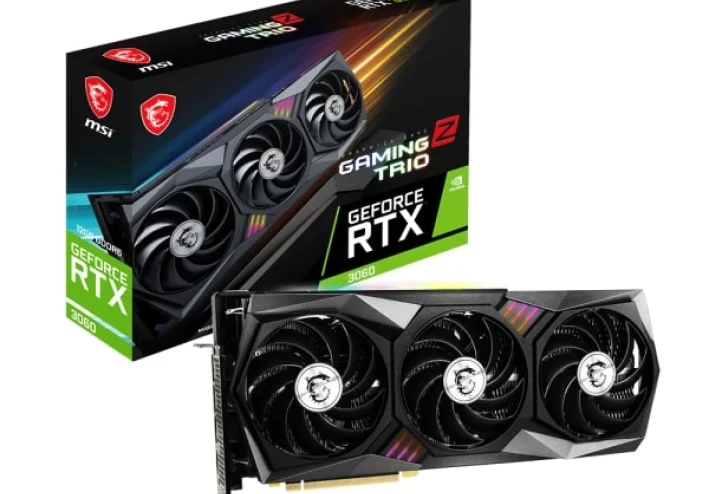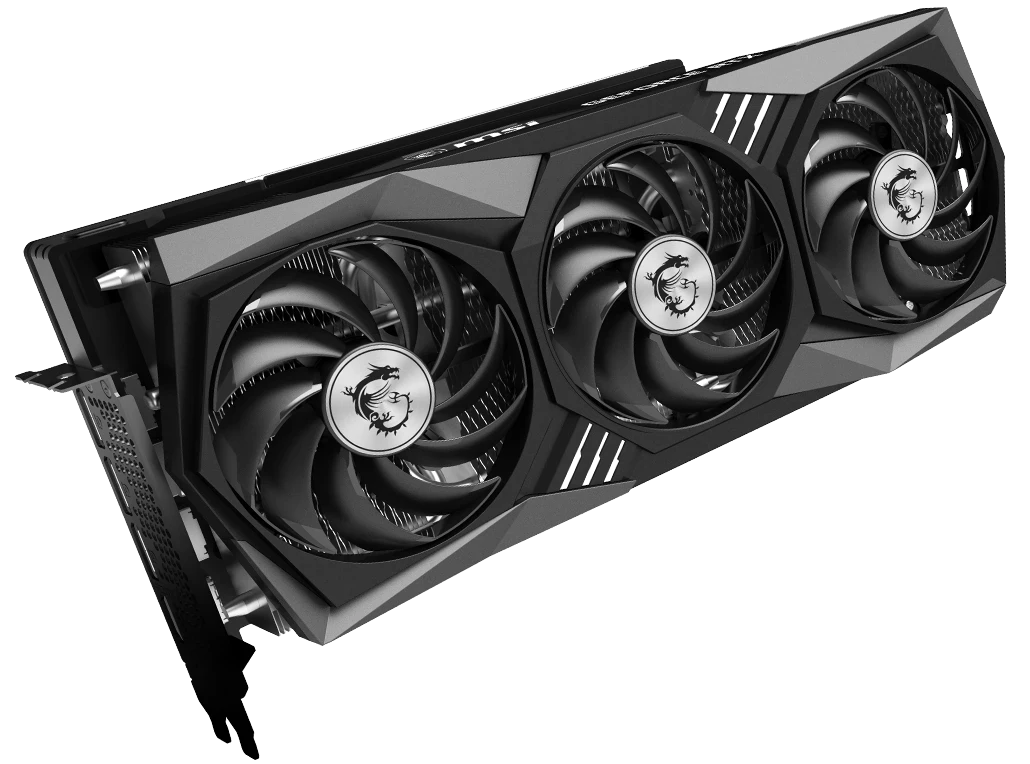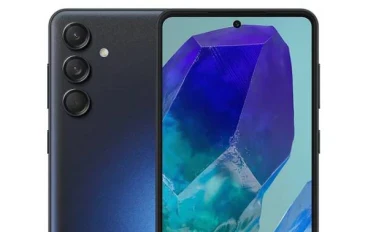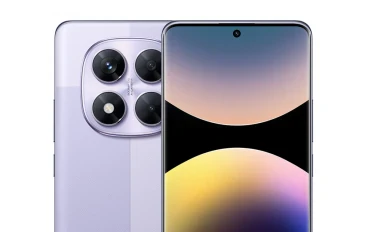
RTX 3060 12GB Review and 2025 Performance Comparison

NVIDIA GeForce RTX 3060 12GB Review (2025): Does the Budget Hero Still Make Sense?
Introduction
The GeForce RTX 3060 12GB launched in 2021 as the people’s GPU: affordable, efficient enough, and fitted with a surprisingly large 12GB of GDDR6. In 2025—after two new generations have rolled through (RTX 40-series “Ada” and the early RTX 50-series) and AMD’s RDNA 3 lineup has matured—the question is whether the 3060 still earns a spot in new or upgraded builds. This review tackles real-world gaming, creator workloads, power/thermals, and a clear comparison against today’s popular cards (RTX 4060/4070 class and Radeon RX 7600/7800 tier).
Specs & Positioning
Key Specifications (RTX 3060 12GB)
Architecture: Ampere (GA106)
Cores: 3,584 CUDA, 2nd-gen RT cores, 3rd-gen Tensor cores
Boost Clock: ~1.78 GHz (varies by AIB)
Memory: 12GB GDDR6, 192-bit bus, ~360 GB/s effective bandwidth (with compression)
TBP: ~170 W (board partner models often 170–190 W)
Display/IO: Typically HDMI 2.1 + 3×DP 1.4a
Where It Fits in 2025
Target Resolutions: 1080p max-settings; entry-to-mid 1440p with upscaling
Sweet-spot Users: Competitive 1080p gamers, creators needing VRAM headroom, buyers on the used market, or those upgrading from GTX 16-series/RTX 2060/older Radeons.
Gaming Performance
1080p (No Upscaling)
The RTX 3060 continues to deliver a strong 1080p experience at high/ultra settings in most modern titles. Heavier games may need a couple of targeted tweaks (e.g., reducing RT or crowd/shadows). E-sports titles easily cruise well above 100 FPS with competitive settings.
1440p (No Upscaling)
Playable in many games at high settings, though you’ll often dial back ray tracing or a few heavy toggles (volumetrics, ultra textures). The 12GB VRAM helps avoid hitching in asset-dense titles and big texture packs.
Ray Tracing & Upscaling
RT: 1st-gen mainstream RT was Ampere’s big value add, but newer GPUs (Ada/RTX 40, RDNA 3) handle RT more efficiently.
DLSS 2 (Super Resolution): Still a lifesaver for the 3060 at 1440p—Balanced/Performance doubles as a “free” settings bump.
Frame Generation: Not supported on the 3060 (DLSS 3/FG requires Ada or newer). You rely on DLSS 2 + smart settings instead.
Content Creation & AI
Video & 3D
Encoders: NVENC (H.264/HEVC) with good quality and editor support; ideal for OBS streaming and Premiere/Resolve timelines.
VRAM Headroom: 12GB helps with mid-complexity Blender scenes, large timelines, and AI image tools that would choke 8GB GPUs.
CUDA/Tensor: Broad acceleration across Adobe, Blackmagic, Topaz, Stable Diffusion (with appropriate models/settings). Not cutting-edge for AI, but far more workable than older 6–8GB cards.
Power, Noise, and Thermals
Efficiency & Heat
TBP ~170 W means most dual-fan designs stay cool and quiet with decent case airflow.
Compared to newer midrange cards (like RTX 4060), the 3060 draws more power for less performance—but stays manageable with a 550–600 W quality PSU.
Driver Maturity & Features
Software Stack
Game Ready & Studio drivers remain robust.
NVIDIA features (Reflex, Broadcast noise removal/background blur, ShadowPlay, Freestyle filters) add tangible quality-of-life, especially for streamers and students creating content.
How It Compares in 2025
RTX 3060 12GB vs RTX 4060 (8GB)
Raster performance: The 4060 is generally faster generation-over-generation, especially at 1080p.
RT + DLSS 3: The 4060’s Ada RT cores plus DLSS 3 Frame Generation meaningfully boost ray-traced titles.
VRAM trade-off: 8GB on the 4060 can hit limits in select modern games with ultra textures or heavy mods; the 3060’s 12GB can feel smoother here.
Power: 4060 is notably more efficient (~115 W class) and easier to cool quietly.
Takeaway: If you want new, efficient, RT-friendly and don’t mod texture packs, the 4060 is the better gamer’s card. If you regularly hit VRAM ceilings or work with large assets, the 3060’s 12GB still punches above its weight.
RTX 3060 12GB vs RTX 4070 / 4070 Super
Performance tier: A substantial step up for 1440p ultra and entry 4K with upscaling; night-and-day for RT.
Features: DLSS 3/Frame Gen + better AV1 encoding improves both gaming smoothness and creator pipelines.
Cost: Considerably higher, but the best “balanced” high-end 1440p experience.
Takeaway: If your budget allows, these cards eclipse the 3060 almost everywhere.
RTX 3060 12GB vs Radeon RX 7600 / 7600 XT
Raster: Radeons often edge out the 3060 in pure raster at 1080p/1440p.
Upscaling: FSR 2/3 support is wide and improving; Frame Generation is vendor-agnostic.
RT: NVIDIA still holds an RT advantage in many titles.
VRAM: RX 7600 XT models with 16GB are attractive for texture-heavy games and creator workloads.
Takeaway: If you prioritize raster FPS and VRAM/$, AMD is compelling; for RT workflows and the NVIDIA ecosystem, the 3060 remains relevant.
RTX 3060 12GB vs Radeon RX 7800 XT
Tier jump: 7800 XT is a full tier faster for 1440p ultra and light 4K.
Value: Frequently strong price/perf in mid-high range.
Takeaway: If your budget stretches, this is a sizeable upgrade path beyond the 3060.
Practical Settings Guide (Make the 3060 Shine)
H3: 1080p Competitive
Preset: High/Competitive mix
Upscaling: Native or DLSS Quality (if CPU-bound, lower shadows/post effects)
RT: Off (unless the game is light on RT)
H3: 1440p Cinematic
Preset: High ~ Ultra (texture Ultra OK thanks to 12GB)
Upscaling: DLSS Quality/Balanced; lock a 60–90 FPS cap for consistency
RT: Medium or off; enable specific RT options (reflections or shadows, not all)
H3: Storage & Streaming
Use NVENC for OBS (CBR or CQP), enable Psycho Visual Tuning; consider AV1 if your pipeline supports it.
Keep textures high, but watch VRAM overlays to avoid swapping.
Creators: What You Can Expect
H3: Video Editing
Smooth 1080p/1440p timelines with plenty of effects; 4K timelines are workable with proxies or optimized media.
Hardware encoding accelerates exports and live streams.
H3: 3D & AI
Mid-size Blender scenes render comfortably with 12GB.
AI image upscaling and local inference models run best with mindful batch sizes/VRAM caps.
Build Considerations
H3: CPU Pairing
A modern 6–8 core CPU (e.g., Ryzen 5/7, Core i5/i7) avoids bottlenecks at high-FPS 1080p.
If you target 1440p/60–90 FPS, CPU pressure drops; you can prioritize GPU and storage.
H3: Power & Case
PSU: Quality 550–650 W (80+ Bronze/Gold) is plenty.
Case airflow: Two intake + one exhaust fans are enough to keep dual-fan 3060s quiet.
Longevity & Value in 2025
H3: New vs Used
New stock is dwindling; used prices vary widely by region.
For tight budgets, a clean, warranty-backed used 3060 can be excellent value—especially if you need 12GB VRAM today.
H3: Who Should Still Buy the 3060?
Yes: 1080p players wanting high settings; creators who benefit from 12GB; students/streamers leveraging NVENC and NVIDIA’s software suite.
Maybe: 1440p gamers who are comfortable with DLSS and thoughtful settings.
No: If you want maxed-out ray tracing or you’re already eyeing 1440p high-refresh (120–165 Hz) in the newest AAA titles—consider RTX 4070-class and above or Radeon 7800 XT+.
Conclusion
The GeForce RTX 3060 12GB has aged gracefully thanks to its large VRAM buffer, mature drivers, and the still-excellent DLSS 2 stack. It’s no longer the obvious “default” recommendation—newer cards deliver better performance per watt and, on the NVIDIA side, DLSS 3/Frame Generation is a genuine differentiator.
But if you’re working within a strict budget, building a capable 1080p machine, or you specifically value 12GB for textures, mods, and creator workloads, the RTX 3060 remains a sensible, well-rounded choice in 2025. For buyers seeking longer-term headroom at 1440p and stronger ray tracing, step up to RTX 4070-class or Radeon 7800 XT; for efficiency and modern features at the midrange, RTX 4060 and RX 7600/7600 XT are the current “new” sweet spots—each with different strengths.
Bonus: Quick Comparison Cheat Sheet
H3: What Each Card Is Best At (2025)
RTX 3060 12GB: Budget 1080p + creator VRAM headroom; great encoding & tools.
RTX 4060: New, very efficient 1080p card; DLSS 3/FG; weaker VRAM capacity.
RTX 4070/4070 Super: Gold-standard 1440p; strong RT; DLSS 3/FG; higher cost.
RX 7600 / 7600 XT: Strong raster for the money; FSR 3; varying VRAM (XT models can have more).
RX 7800 XT: Excellent 1440p value; can stretch to 4K with upscaling.


































